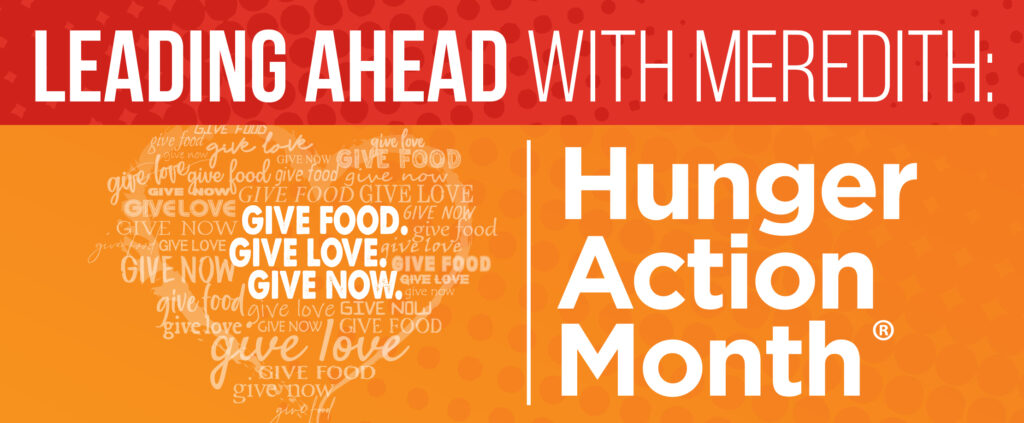On February 7, 2014, the St. Louis Business Journal released their list of the largest nonprofits in the area. The St. Louis Area Foodbank was proud to crack the top 10 based on fiscal year 2013 operating budget, coming in at number 8 overall.
Independent auditors assign a value of $1.69 per pound on the food that comes in and goes out of our warehouse in Bridgeton, along with our cash operating budget. As our distribution totals increase (nearly 35 million pounds distributed in FY2013), so does our operating budget.

In addition to our ranking on the list, reporter Nicholas Ledden from the Business Journal also went back and took a look at this list from five years ago. He calculated which organizations showed the greatest percentage increase in operating budget over that time (fiscal 2008 to fiscal 2013). The St. Louis Area Foodbank tops that list with a 138.02% increase ($27,907,780 in 2008 to $66,427,014 for 2013).
An abbreviated interview with St. Louis Area Foodbank President and CEO, Frank Finnegan, accompanied the list in the printed version of the paper. The full interview is below:
So your operating budget has seen some significant growth over the last five years. To what do you attribute the increase?
We asked the community to support our capital campaign when we moved into our current facility in Bridgeton in 2006. We stated then that the additional space would allow us to significantly increase food distribution to hungry families in our community. The year before we launched the capital campaign, we distributed 12 million pounds of food and personal care items. Over the last five years we’ve made good on our original promise, going from 20 million pounds in fiscal year 2009 to nearly 35 million pounds in fiscal year 2013. Auditors assign a value to the food and personal care items we distribute, so as the amount of pounds we distribute increases, so does our operating budget. We have also invested heavily in infrastructure updates that have significantly improved the efficiency of our operation. Our distribution models have evolved as well, so much so that now more than 50 percent of the product we distribute is delivered directly to our partner agencies. As a result, we have tripled the number of trucks we have on the road.
Do you have expansion plans for 2014?
Although we’re on pace to increase distribution by six percent this year, our primary focus has shifted to the nutritional value of the product. We plan to improve the nutritional component of our distribution by increasing the availability of fresh fruits and vegetables.
How would you rate the organization’s fiscal 2013? Highlights?
We had the single largest year-over-year distribution increase in our history – 26 percent. However, as proud as we are of that accomplishment, we are just as pleased that we also achieved our goal of establishing an operating reserve that will help sustain the Foodbank’s long-term viability. Volunteers are vital to our operation. In 2013, we saw a record number of volunteers come through our doors to help us repackage the food we distribute. To accommodate that growth, we added an additional parking lot at our facility.
What have you identified as the organization’s single greatest opportunity for continued growth?
Since the food industry donates excess product, donations to the Foodbank follow food industry trends. Manufacturers and producers have made significant progress in eliminating mistakes, so donations are trending more in the area of fresh fruits and vegetables. That’s a happy coincidence for the Foodbank as fresh produce is exactly what is needed to improve the diets of the people we’re serving.
What is the organization’s impact on the community? Has that impact grown over the last five years as well?
We are the primary food source for the majority of our 512 partner agencies, which include food pantries, soup kitchens, shelters and other nonprofits who feed those in need throughout our 26-county service territory in Missouri and Illinois. Demand for food assistance has grown due to the economic downturn and the evolution of the workforce from good-paying blue-collar jobs to lower-paying and part-time jobs in the service sector. For the first time, working age people now make up the majority of U.S. households that rely on food stamps, primarily as a result of a slow economic recovery, high unemployment and stagnant wages. Unfortunately, as the number of families in need continues to rise, our impact becomes even greater.
Biggest challenge going into 2014?
Our biggest challenge is to improve on the already impressive growth and progress achieved last year. Hunger is an ongoing problem, and it doesn’t discriminate. It affects young and old, all races and religions; it’s prevalent in our cities as well as rural counties. Our biggest challenge is to convince people hunger only exists because we allow it. We don’t lack for food in this country; we lack the political will to simply end it.
Access to the online version of the list and the interview with Frank Finnegan require a subscription to the St. Louis Business Journal.

